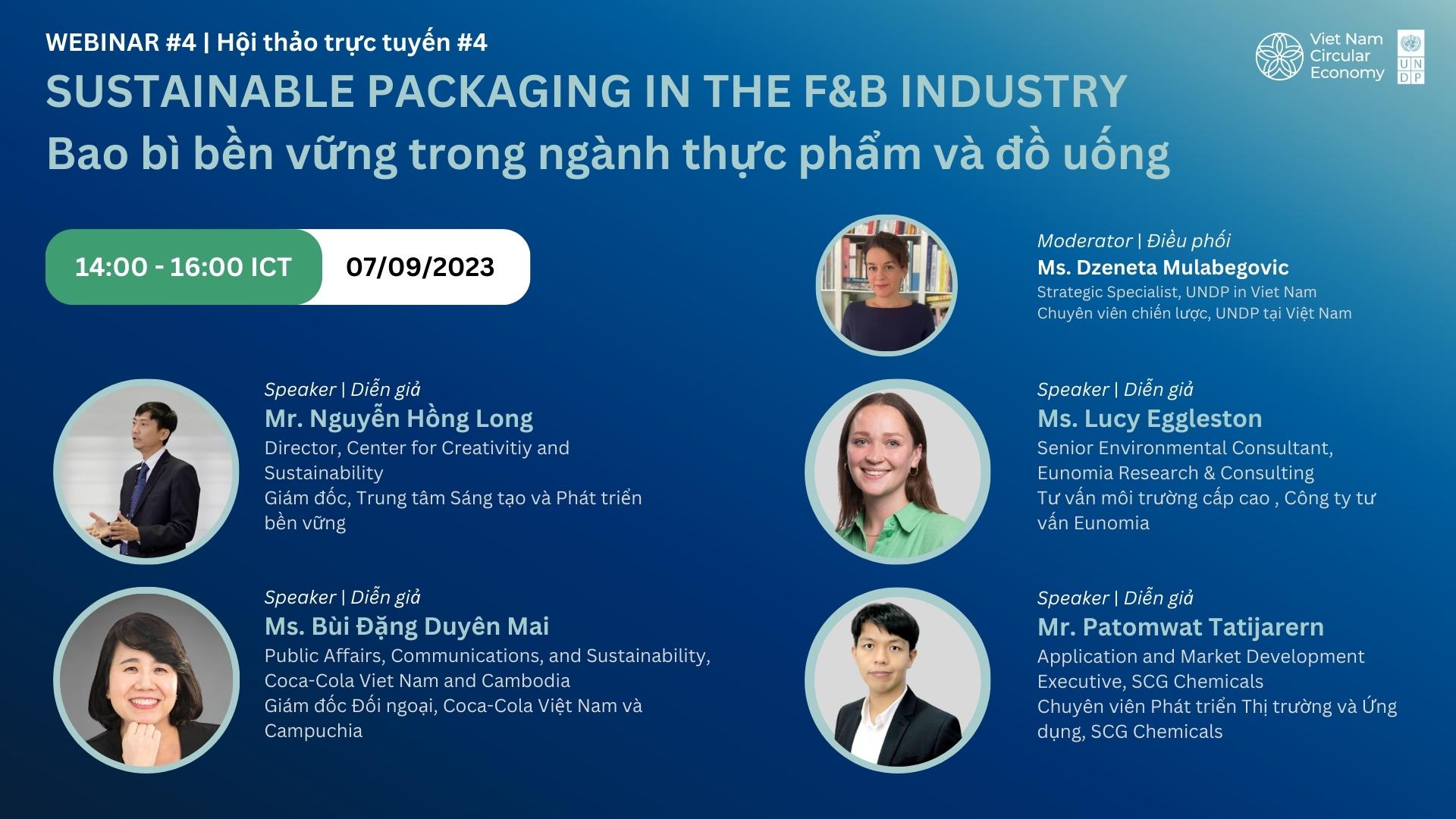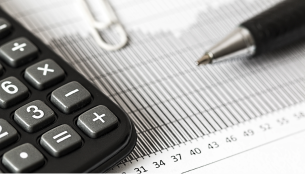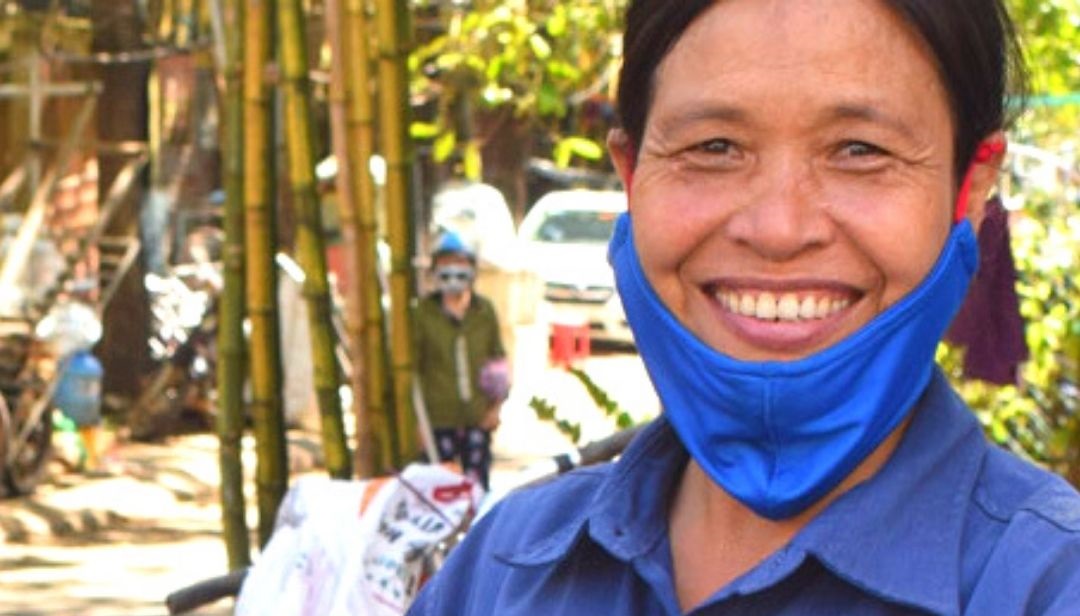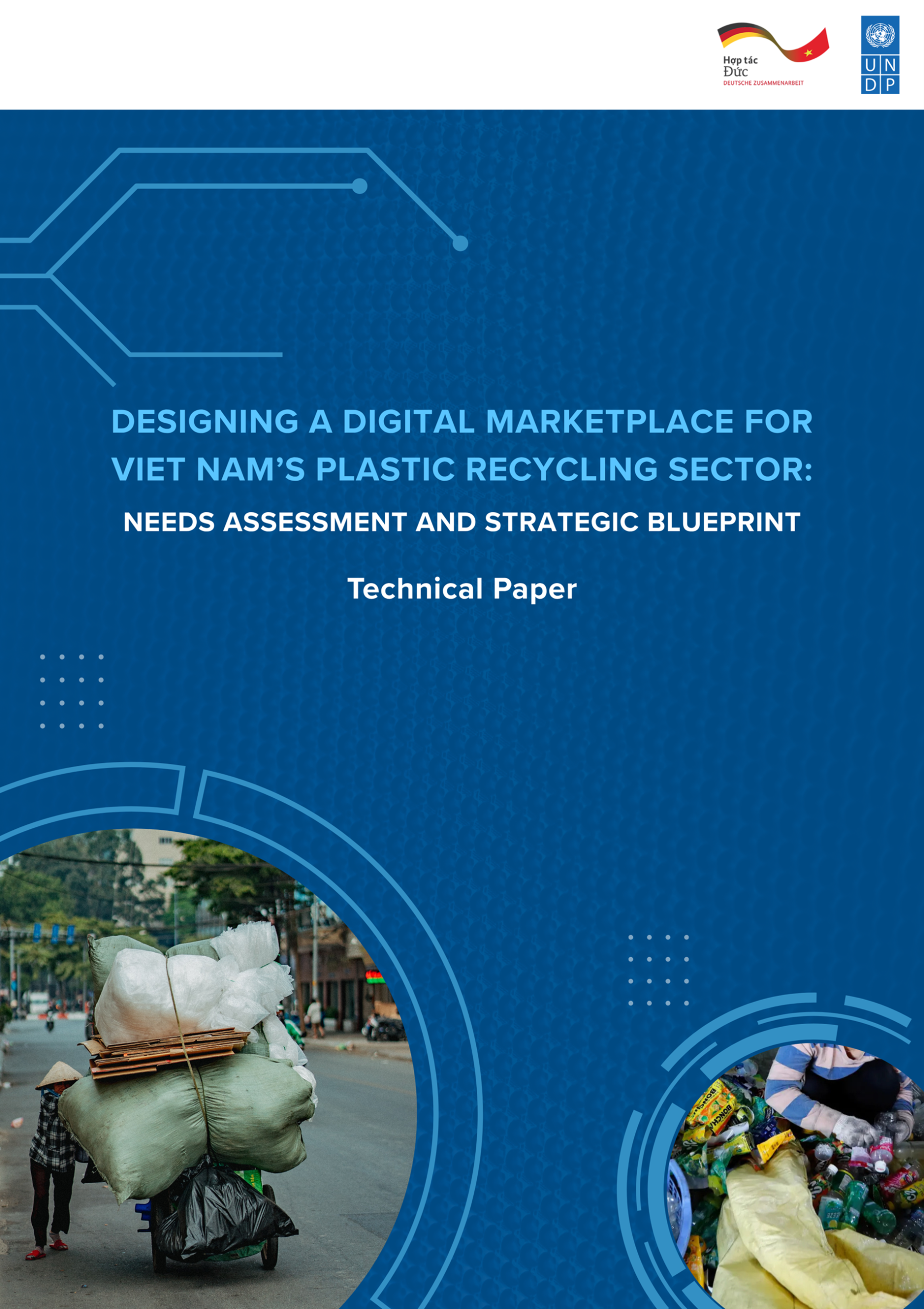Sustainable Packaging in the F&B Industry

On September 7, the Vietnam Circular Economy Hub held an online webinar with the topic of “Sustainable Packaging in the F&B Industry”. The event enjoyed the participation of 4 speakers, namely Mr. Nguyen Hong Long, Director, Center for Creativity and Sustainability; Ms. Lucy Eggleston, Senior Environmental Consultant, Eunomia Research & Consulting; Ms. Bui Dang Duyen Mai, Director of the Public Affairs, Communications, and Sustainability Deparment, Coca Cola Viet Nam and Cambodia; and Mr. Patomwat Tatijarern, Application and Market Development Executive, SCG Chemicals (SCGC). The event also assembled more than 80 experts and business representatives from Vietnam, Thailand, The United Kingdom, Pakistan, Malaysia, and Hongkong.
Mr. Nguyen Hong Long, Director of the Center for Creativity and Sustainability, initiated the webinar by sharing insights on eco-design and its applications in F&B packaging. In the context of the current energy crisis and the increasingly scarce resources, this approach not only minimises the negative environmental impact of products, but also plays a crucial role in reducing production costs for businesses. He also introduced a toolkit designed to support the implementation of eco-design, developed by the Centre for Creativity and Sustainable Development.
Ms. Lucy Eggleston, Senior Environmental Consultant at Eunomia Research & Consulting, presented on “Sustainable Packaging Strategies in the F&B Industry” and provided a general framework to guide F&B businesses in developing sustainable packaging strategies. She also encouraged businesses to apply the “Waste Hierarchy” principle and highlighted three sustainable packaging trends being implemented by companies (reuse systems, design for recyling, or DfR, and recycled content), providing specific case studies for each trend illustrated.
Ms. Bui Dang Duyen Mai, Director of the Public Affairs, Communications, and Sustainability Department, Coca Cola Viet Nam and Cambodia, once again reaffirmed Coca-Cola’s efforts in contributing to the global crisis of packaging waste. Coca-Cola not only sets the goal of making 100% of their packaging recyclable, but also collaborates with partners to enhance the collection and recycling of packaging. As of now, Coca-Cola has collected and recycled 40% of the packaging released into the market, with a target of 50% for the next year, doubling the recycling rate stipulated in the Extended Producer Responsibility (EPR) policy, which is 22%.
Mr. Patomwat Tatijarern, Application and Market Development Executive, SCG Chemicals (SCGC), delved into the technical aspect of producing sustainable flexible packaging by introducing BW01501G – an oxygen barrier coating developed by SCG Chemicals to replace the traditional aluminum layer. This technology ensures that this type of packaging maintains material consistency, enhances recyclability, while still guaranteeing product preservation capability. He anticipated that mono material flexible packaging would be the trend, as more and more businesses are showing an interest in sustainable packaging.
At the end of the webinar, the speakers took time to address questions from participants regarding businesses’ perspectives on Extended Producer Responsibility (EPR) and Corporate Social Responsibility (CSR), opinions on the mono material packaging technology, and the benefits and aspirations of businesses when transitioning to sustainable packaging. The information and knowledge shared in this event will contribute to shaping and promoting sustainable development in the F&B industry in Vietnam.
Key takeaways:
- Starting point for sustainable packaging strategies:
- Begin with an assessment of the current product portfolio.
- Identify the minimum standards that must be met, internal drivers, and anticipate future risks related to evolving standards and regulations.
- Use this information to formulate an appropriate packaging strategy.
- Significance of product design:
- The product design phase plays a pivotal role, determining 80% of the environmental footprint throughout the product’s lifecycle.
- Additionally, approximately 85% of the total product cost is determined during this phase.
- Eco-design is a critical tool in achieving the Net Zero Emissions objective.
- Waste management strategy hierarchy in packaging design:
- When designing packaging, adhere to the principles of the waste management strategy hierarchy, ranked from highest to lowest impact: Reuse (implementing a reuse model), Recycle (prioritising designs that enhance recyclability and incorporate recycled materials)
To explore and register for other webinars of the same cycle, please click on this link.












